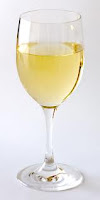By Patricia Winton
The Rome Reads Book Club met in a little-known bar to select next year’s reading list. We chose this bar because it provides two amenities required by the group: reasonable proximity to public transportation and ample parking. This group is made up of people who drive wherever they go, including a couple of motor scooterists, and those who get about on buses, trams and trains.
Everyone was settled with glasses of fruit juice or beer when I arrived. I went to the bar and collected an acceptable, if not outstanding, glass of wine for a couple of euros and joined my friends.
At the next table, a group of Chinese men and women gathered over drinks and embroidery. They worked on a communal project using the same fabric and gold braid, frequently comparing their work. One woman rethreaded her needle from time to time, pulling it through the fabric and up over her head. They reminded me of a quilting bee I saw my aunt host when I was a child.
Some Italians grouped around another table, sharing glasses and gossip, a favorite Italian passtime. On stage a couple of musicians tuned their instruments, occasionally drowning out our conversation. Some Italian teens strung out a line of chairs before the stage, preparing to enjoy the show. We put our book choices to a vote. The Chinese continued to stitch.
A singer joined the musicians, and they performed a set. The teens slouched in their chairs, ears on the band, eyes on passing girls. The Italian adults laughed at a joke. We assessed our book choices and assigned dates for each discussion. The Chinese admired their handiwork.
The band took a break. We folded our notes and talked of vacation plans. One goes to Stromboli, an Italian volcanic island; another is off to a music festival in Strasbourg, France; a third plans to loll at Lake Vico north of Rome. I am off cruising some Greek Islands. The teens bunched together to trade insults and assess what they’d heard and seen. The Chinese continued to stitch.
The musicians returned and struck up a catchy rhythm, heavy on the bass. Outside, a dog joined in, barking to the beat. The band took another break; we gathered our belongings and ambled away, leaving behind the gossiping Italians, stitching Chinese, and barking dog.
On the street, we wished each other a good summer--those on wheels heading in one direction, those on foot another.
A good time was had by all.
 |
| December Choice |




